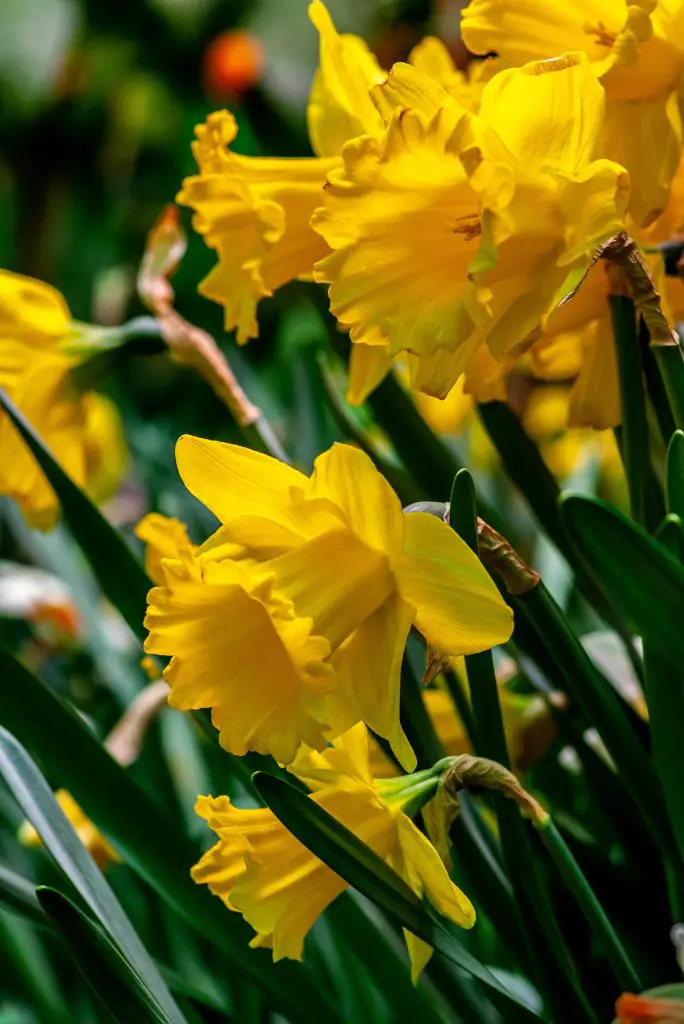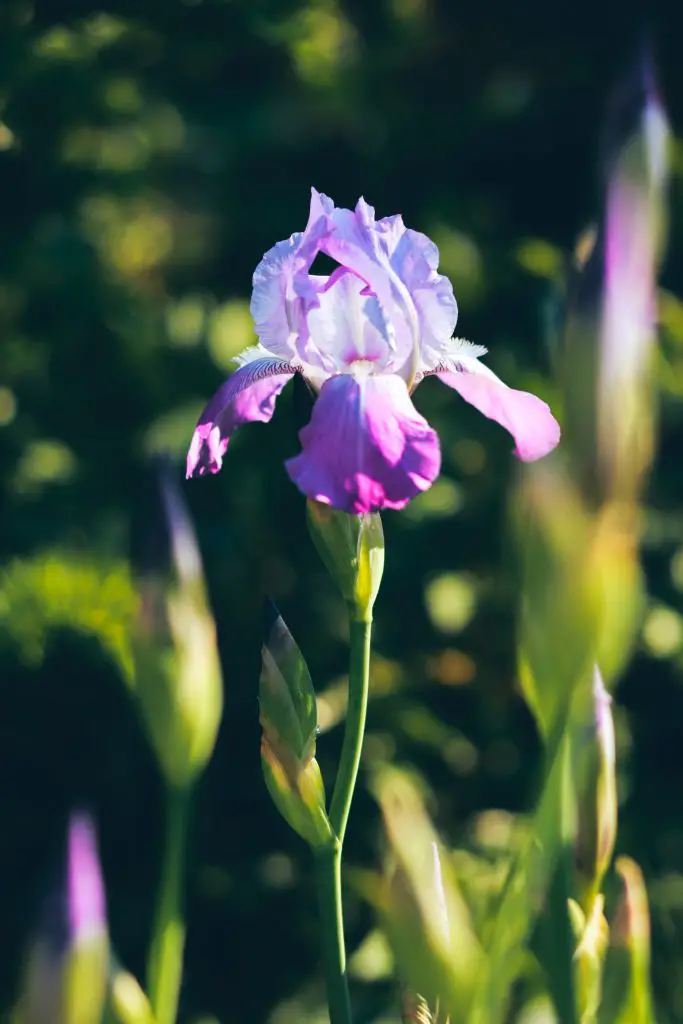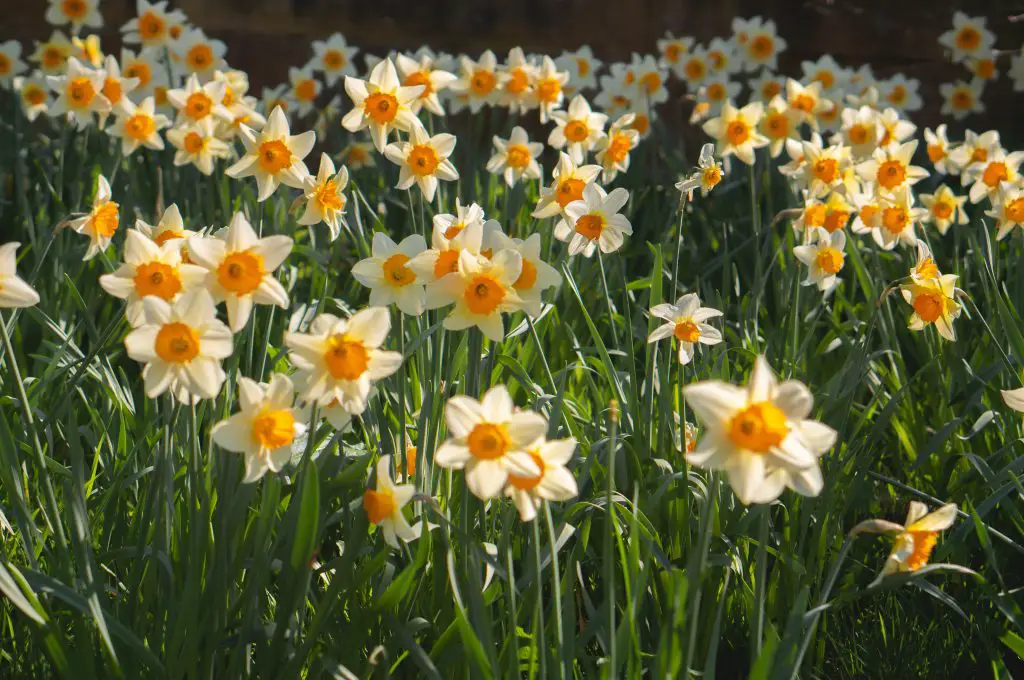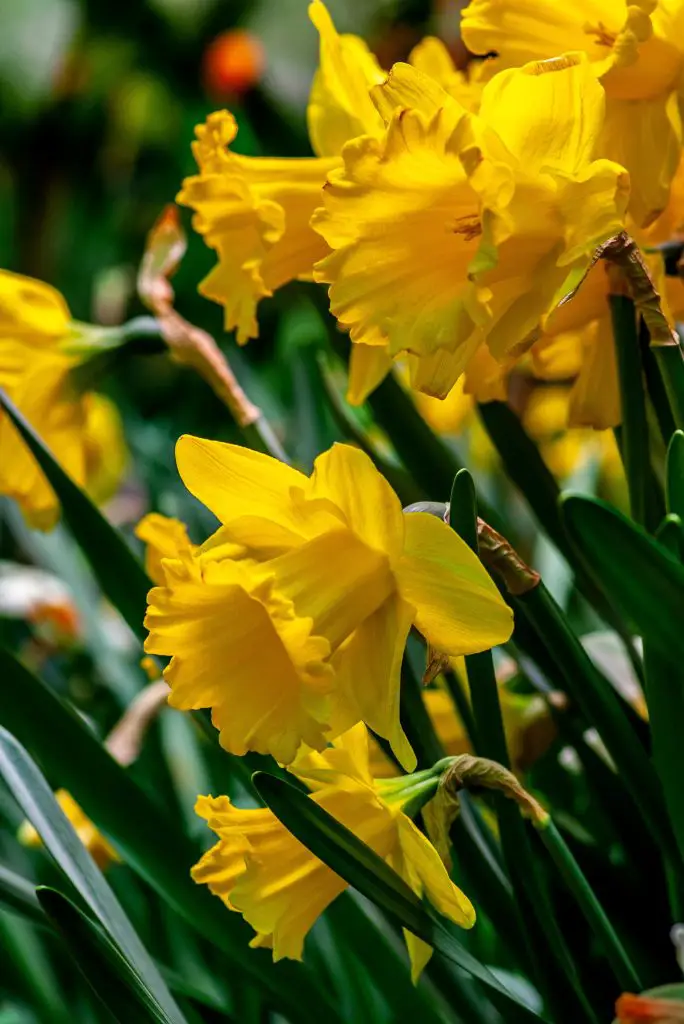What Is The Difference Between Iris And Daffodils? Spring bulbs are some of the most popular flowers to put into your garden particularly early in the season as they provide a fantastic splash of colour when the weather is still cold and miserable. However, one of the most common questions that is asked is what is the difference between irises and daffodils, which are among the 2 most popular flowers that are grown in a garden.
Irises and daffodils are both flowering bulbs that produce flowers in spring but their flower shape varies significantly. Daffodils generally have a central trumpet structure surrounded by a range of flowers that most commonly is yellow to white in colour. Whereas irises have a flower that has individual pedals that flop out from the central stem creating a distinctive shape. The iris comes in a broader range of colours than the daffodils with there being varieties that are yellow, white, red, blue, and pink.
Additionally, the iris genus is significantly larger than the daffodil genus having between 200 and 300 different species included within it. Within this genus, there is a subgenus which includes bearded irises, beardless irises, smooth bulb irises, bulbous irises, and reticular bulb irises. Due to this broad range of species, there are some varieties that are suitable for growing in wet boggy soil while others are happy to grow in rocky mountains landscapes or semi-desert locations.

There are a number of varieties of plants that are extensively grown in ornamental gardens throughout the world as a method of extending the flowering season for the bulbs. It is common for gardeners to plant them into pots in layers on top of each other and then allow them to flower in succession.
Both plants contain bulbs that need to be planted in autumn to ensure that they get sufficiently cold to encourage good flowering. This means that both flowers are limited to being grown in locations that are Zone 9 or lower. However, if you are really a lover of these two particular flowers and you live in warmer locations you can trick the bulbs into thinking they are being grown in cooler climates by refrigerating the bulbs for around 4 to 6 weeks before planting them into the garden in midwinter. In these climates, both bulbs need to be lifted after they flower and then stored for next season.
Caring For Daffodils And Irises
Daffodils and irises are relatively low-maintenance plants if you live in a region that naturally suits their growing habits which is less than Zone 9 as mentioned above. In these locations, there is little maintenance required. The bulbs, however, do periodically need to be lifted and divided because they do multipy over time.
If you do not lift them eventually the plants will become overcrowded and begin to reduce the quantity and quality of the flowers. Typically, lifting of the bulbs needs to be done every 3 to 4 years to ensure continuous flowering.

When lifting bulbs it is advisable to replenish the soil at this point in time by digging in some additional compost and reapply a layer of mulch to retain moisture in the soil and also suppress weeds. When selecting a location to plant bulbs for the first time it is important to avoid planting them in an area that remains wet and boggy unless they are a specific variety of iris that is suited to these types of conditions.
Once the plants are in the ground there is very little maintenance required on an ongoing basis the main thing is to ensure that once the plants have flowered that you snapped off the remainder of the flower heads leaving foliage behind. Removing the flower heads allows the plant to concentrate on photosynthesising rather than producing seeds which will lead to higher quality flowers the following year.
However, it is important that only the flower heads are removed and the remainder of the foliage is left on the plant and not cut down. This is critical because the energy from the photosynthesis needs to be stored back into the bulb during this period to ensure that it has enough energy to flower properly the following year.
As such foliage should only be removed after the leaves have started to brown and are clearly dying back at this point photosynthesis has largely ceased and the plant is preparing for the following season. At this stage, the foliage can be cut to the ground, however, if you’re anything like me you may also need to put a stake in to make sure that you don’t accidentally plant on top of the bulbs that are already there.

When To Pick Daffodils And Irises
If you want to bring flowers inside and put them in a vase it is important to pick the daffodils and Iris early before they have fully opened which is what commercial producers do. The best time to pick the plants is when you can see the colour of the flower appearing from the foliage but it is yet to open.
If you pick it at this time you will maximise the amount of time that it looks good indoors in your vases however one alternative method that some people do is to actually grow the bulbs themselves within the vases by placing the bulbs in the vase and leaving a small amount of water at the base of the vase that just touches the bottom of the bulbs. If you do this you can get the plants to grow and flower within the vase itself to produce a really spectacular display.
However, the downside of doing this is that it is generally not great for the quality of flowers that are produced from those bulbs the next year because they do not have access to the soil which means that they lack the nutrients to replenish themselves. So if you’re going to do that wait until the bulbs have multiplied so that you have a heap of spare bulbs lying around to sacrifice to create those beautiful displays.

How To Extend The Flowering Period Of Daffodils And Irises
The flowering period of an individual daffodil cannot be extended by itself however the timing of when it is flowering can be manipulated either by the weather conditions or by the variety that is selected.
This means that you can extend the period over which you have daffodils or iris flowers available in your garden by carefully selecting varieties that flower early and late flowering. To see the varieties that you can get access to try visiting gardenia.net as they have an extensive library of information on the different types of bulbs that are available to grow.
I hope you found this article useful and have great success growing daffodils and irises at home. If you have any additional comments or questions please leave them in the section below.
Relevant Articles
Is It Too Late To Plant Daffodils? Will I Get Flowers?
How To Tell When Daffodils Are Ready To Harvest?
Do Irises Spread? Are They Invasive?
What Is The Difference Between Daffodils And Buttercups? Are They The Same Thing?
